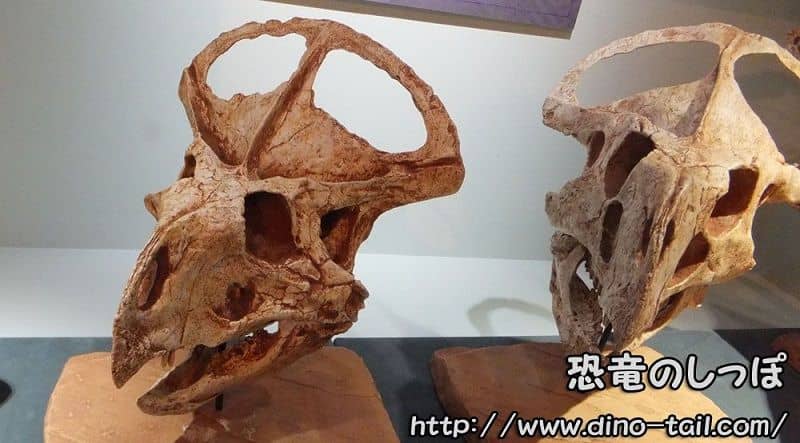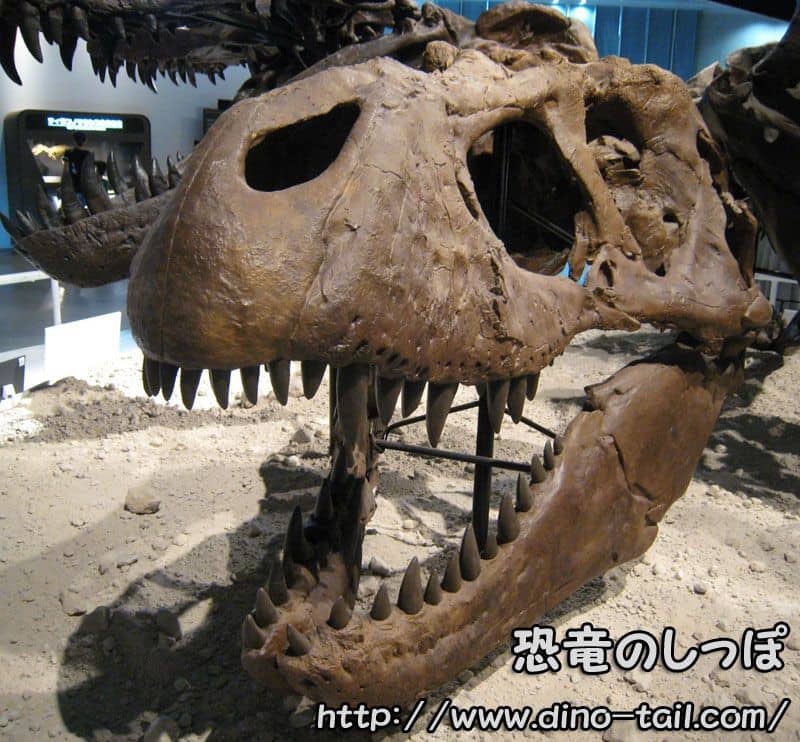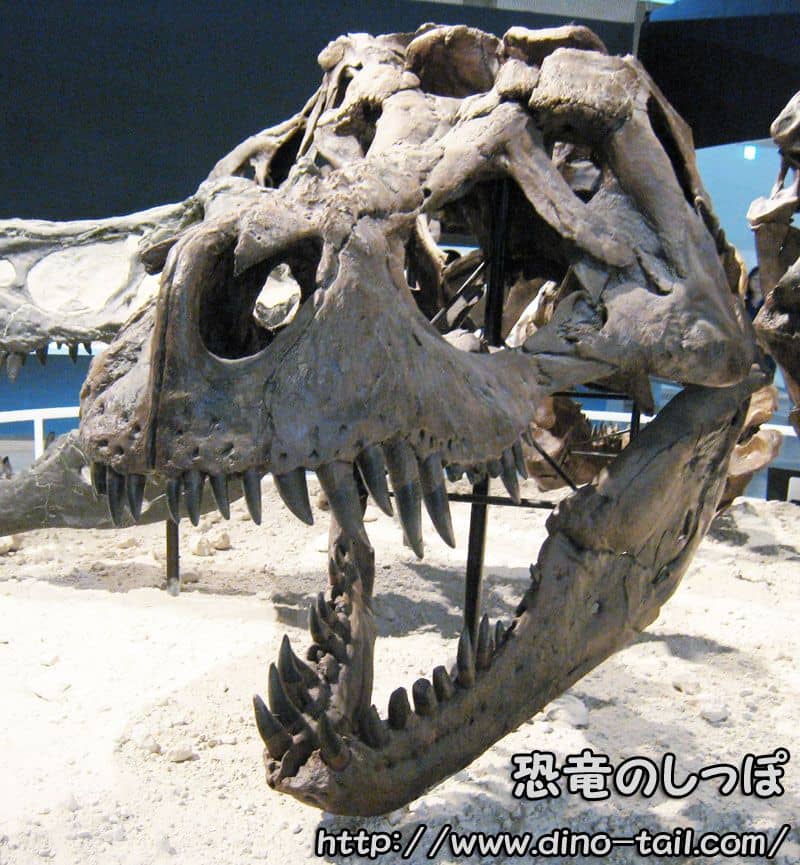It's Difficult to Tell Sex from Fossils
Determining the sex (male, female) of a dinosaur from a fossil is not an easy task.
This is because parts that clearly indicate sex, such as reproductive organs, are unlikely to be preserved as fossils. Therefore, research is being conducted to infer sex from skeletal differences (
sexual dimorphism
).

For example, in the marginocephalian Protoceratops, two patterns of skulls have been found with different nasal horns and frill curvatures. These differences are thought to indicate sex, but it has not been determined which is male and which is female.
Furthermore, there is a theory that the size of the head crest in hadrosaurids and the thick skull of Pachycephalosaurus are also examples of sexual dimorphism, but it is highly possible that these are differences due to growth stages, and they are not conclusive evidence of sex.
If Medullary Bone is Found, It's a Female
While determination by sexual dimorphism is difficult, there are cases where it can be definitively determined that a discovered dinosaur is female.
In 2005, a Tyrannosaurus found in Montana, USA, was identified as "female."
During egg-laying, birds form a special bone tissue called
medullary bone
inside their bones, such as the femur. This is a temporary store of calcium for the eggshells and is only found in females that have experienced egg-laying.
The aforementioned Tyrannosaurus also had traces of this medullary bone preserved as a fossil, confirming that it was female. Furthermore, subsequent chemical analysis detected
keratan sulfate
, a substance also found in the medullary bone of modern birds, scientifically corroborating this discovery.
In addition, individuals of an estimated 10-year-old Allosaurus and an estimated 8-year-old Tenontosaurus (a relative of Iguanodon) have been found with medullary bone. These would also have been females that had laid eggs.
The Difficulty and Future of Sex Determination
While the presence of medullary bone indicates a "female that has laid eggs," an individual without medullary bone is not necessarily a "male."
This is because the absence of medullary bone could also mean it is a "female that has not experienced egg-laying."
In fact, a fossil of the theropod Oviraptor was found in a brooding position over eggs, but this individual's bones did not have medullary bone. If the parent was incubating the eggs, it is possible that an individual that had not laid eggs, i.e., a male (father), was brooding. However, this has not been definitively determined either.
It is also known that the physique of Tyrannosaurus can be divided into a robust type and a relatively gracile type.
It is sometimes pointed out that this difference in physique is due to sex (a common belief is that "the robust one is female because it is better suited for childbirth," but there is no scientific basis for this, and it is not known which is male and which is female).

Male skull?

Female skull?
Thus, determining the sex of dinosaurs is a very difficult task, but research is progressing. For example, in other prehistoric creatures, it has been found that the forelimb bones of the male marine reptile Keichousaurus are thicker than those of the female, which is thought to be evidence of behavioral differences during mating.
At present, only well-preserved fossils with confirmed medullary bone can be identified as female, but in the future, if technology for reading molecular information such as proteins from fossils advances, the sex of more dinosaurs may be revealed. Further research and discoveries are awaited.
